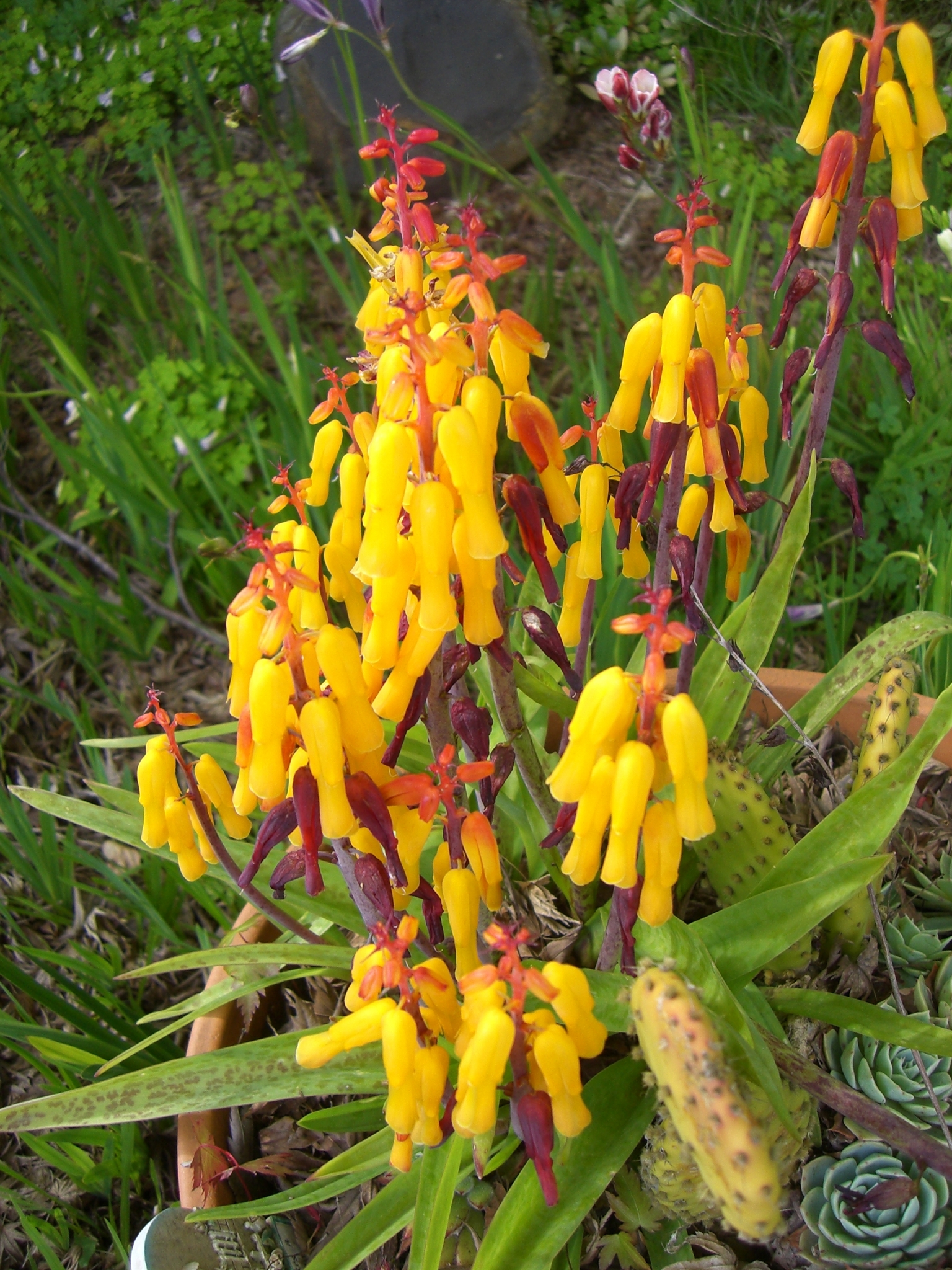
Named for the Swiss botanist W. de Lachenal (1736–1800).
Perennial, bulbous herb. Leaves 1-few, basal, often spotted. Flowers radially symmetrical, tubularbell- shaped, stalked, individual flower stalks not articulated. Inflorescence a terminal raceme or spike. Tepals 3+3, 1-nerved, basally united, outer 3 tepals generally shorter, often with apical swellings. Stamens 6, attached to the floral tube apex. Ovary superior. Fruit a capsule. Seeds rounded, black.
Many new species have been added to this genus in recent years and it is likely that the genus will be merged with Polyxena.The genus has few suppliers although L. aloides is quite common in gardens.
About 117 species from southern Africa, most from the Cape region.
The Garden Plant Conservation Association of Australia collection is held by Don Journet in Victoria.
Bulb with the spike-like inflorescence of tubular-bell-shaped flowers with shorter outer tepals fused basally and with apical swellings.
Ingram (1966a), Crosby (1986), Duncan (1988, 1998, 2000).
Source: (2005). Lachenalia. In: . Horticultural Flora of South-eastern Australia. Volume 5. Flowering plants. Monocotyledons. The identification of garden and cultivated plants. University of New South Wales Press.
